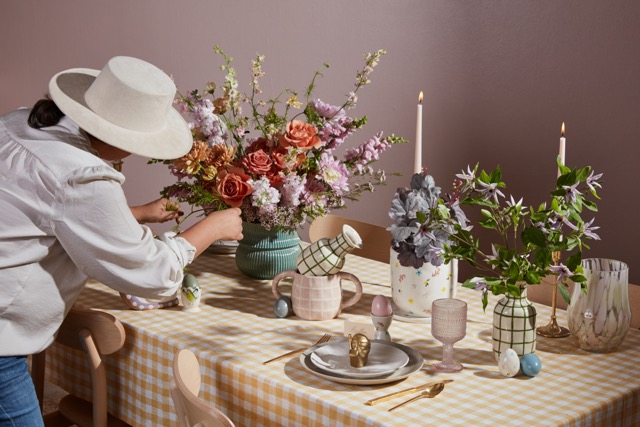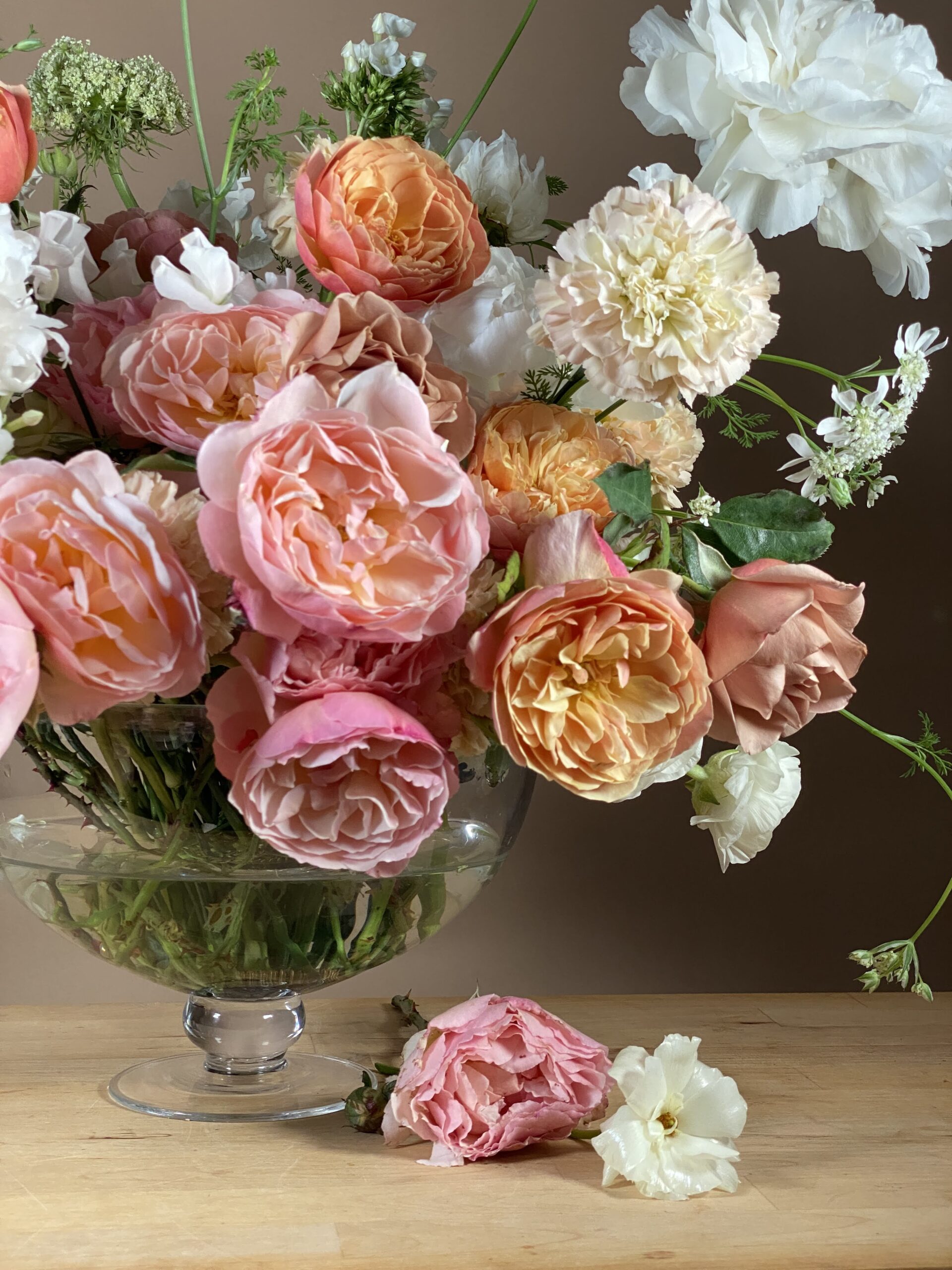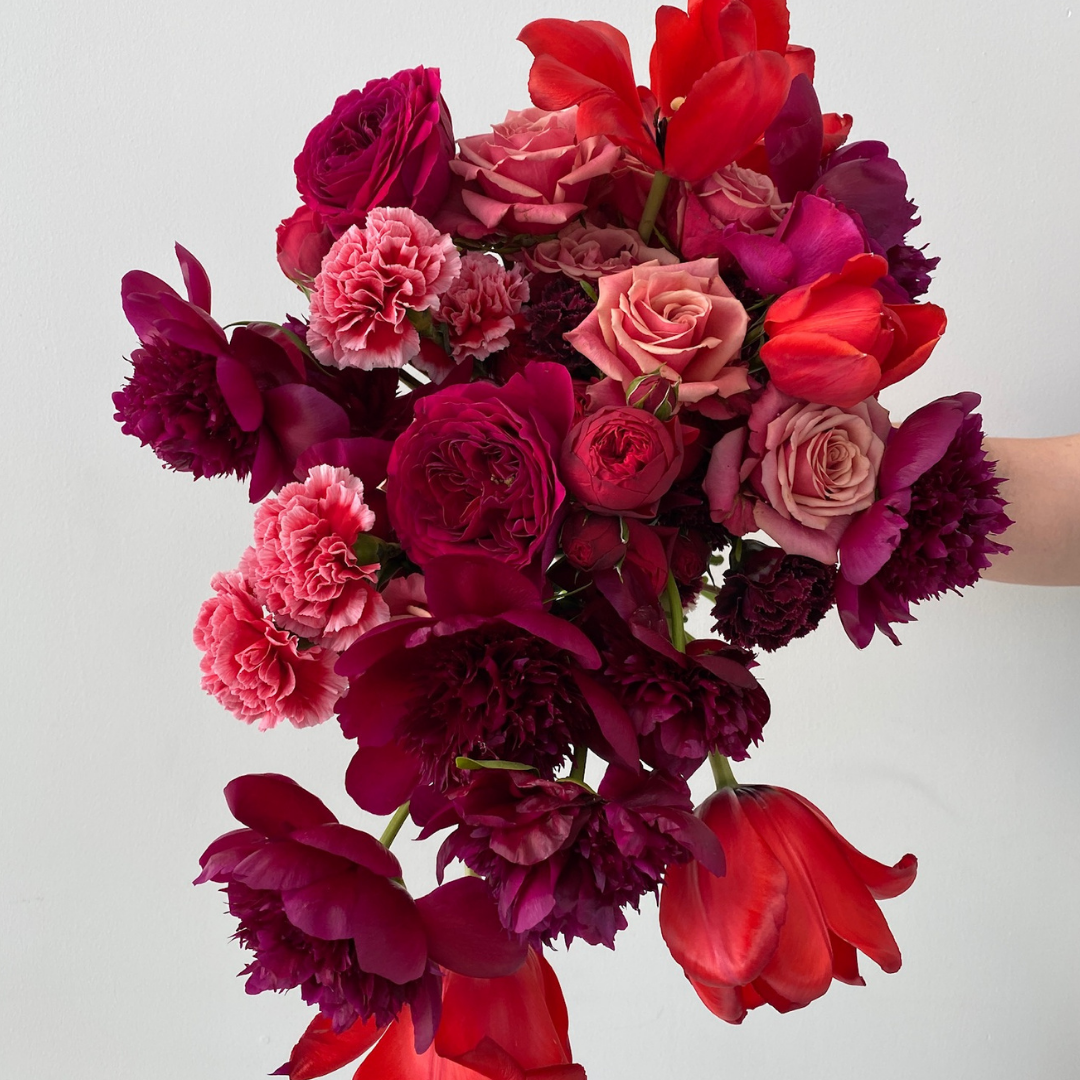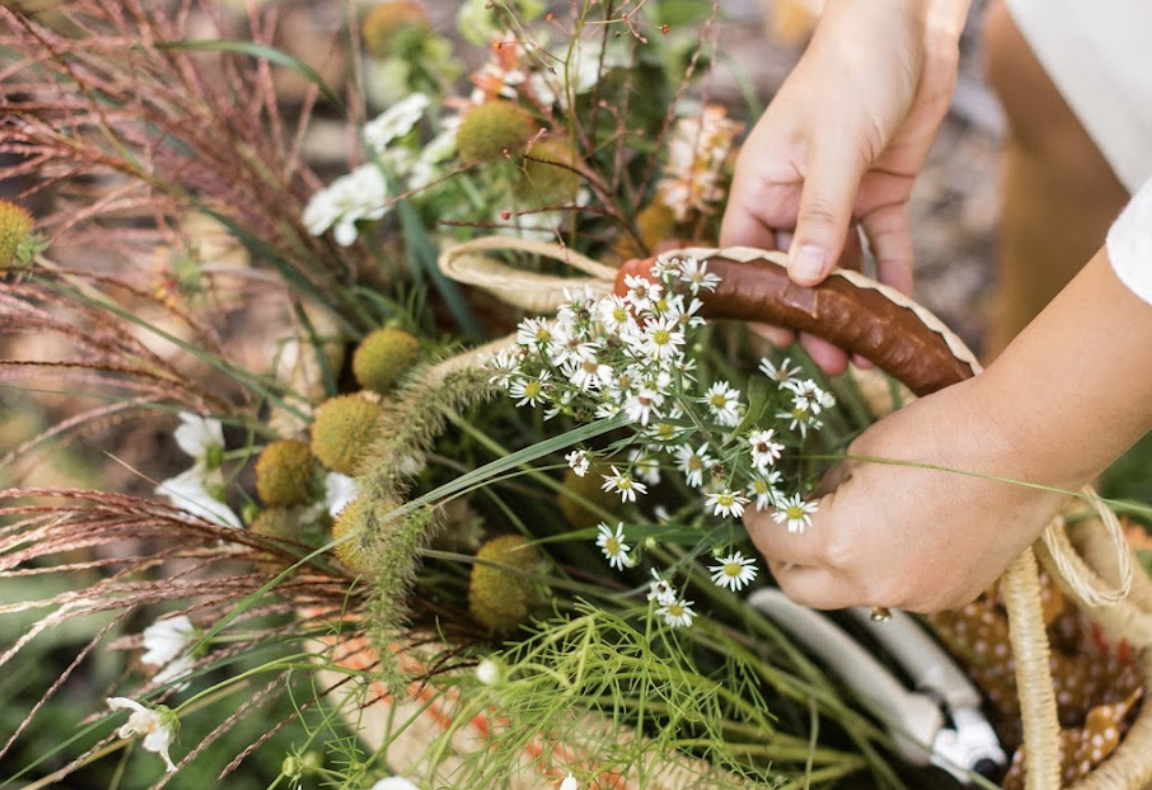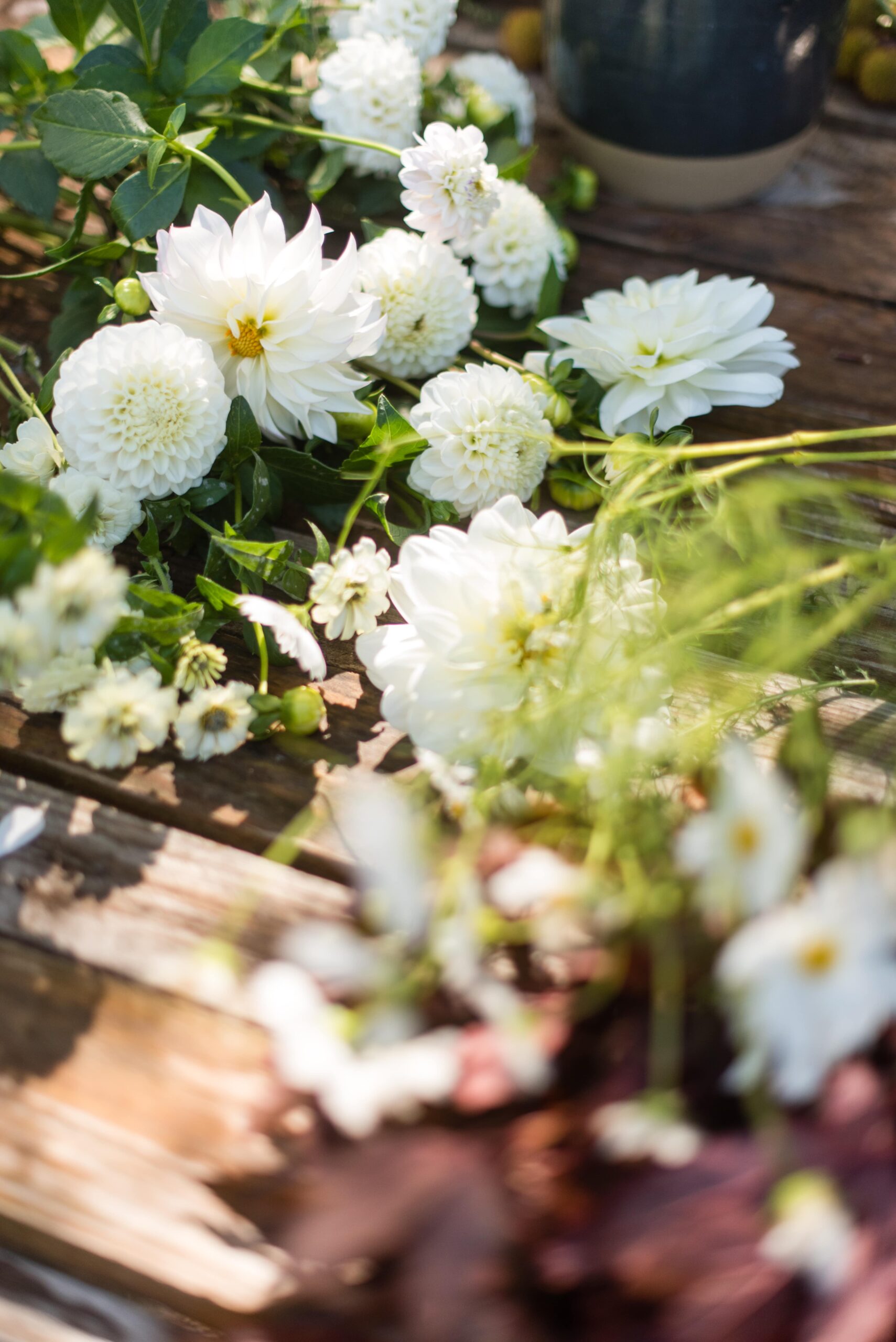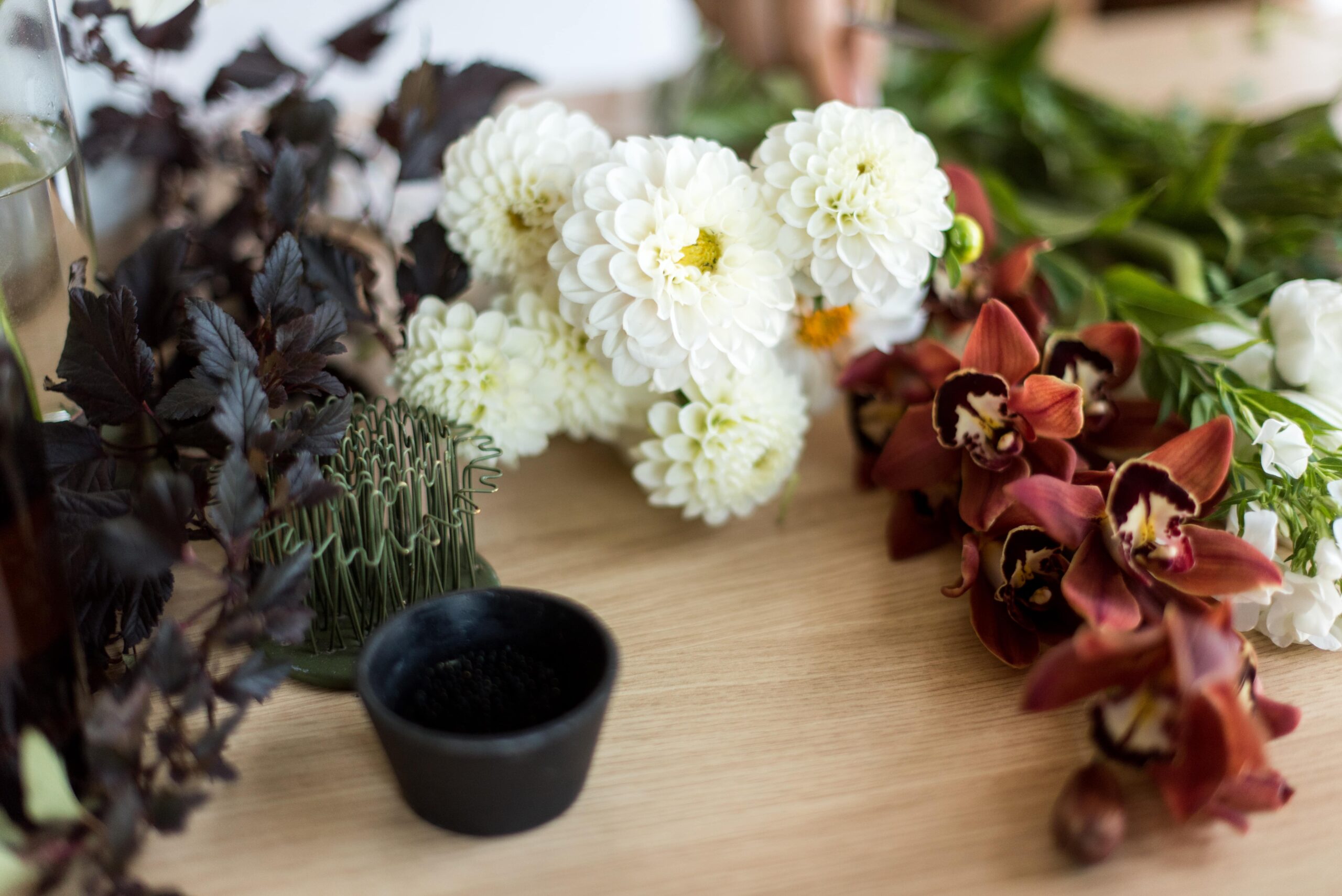7 Essential Floral Design Tips
As spring picks up, so does the busy season. Check out this refresher below for 7 Go-To Floral Design Tips!
#1 – Clean, clean, clean!
Prep work makes all the difference when it comes to flower arranging. I can’t stress this enough! Before you dive into a gorgeous bouquet or centerpiece, it’s important to clean your tools and containers properly (you can read about that here!). Wash and disinfect these items to remove any bacteria that may be on them. When flowers come in contact with bacteria, they die faster. The cleaner your tools, the better!
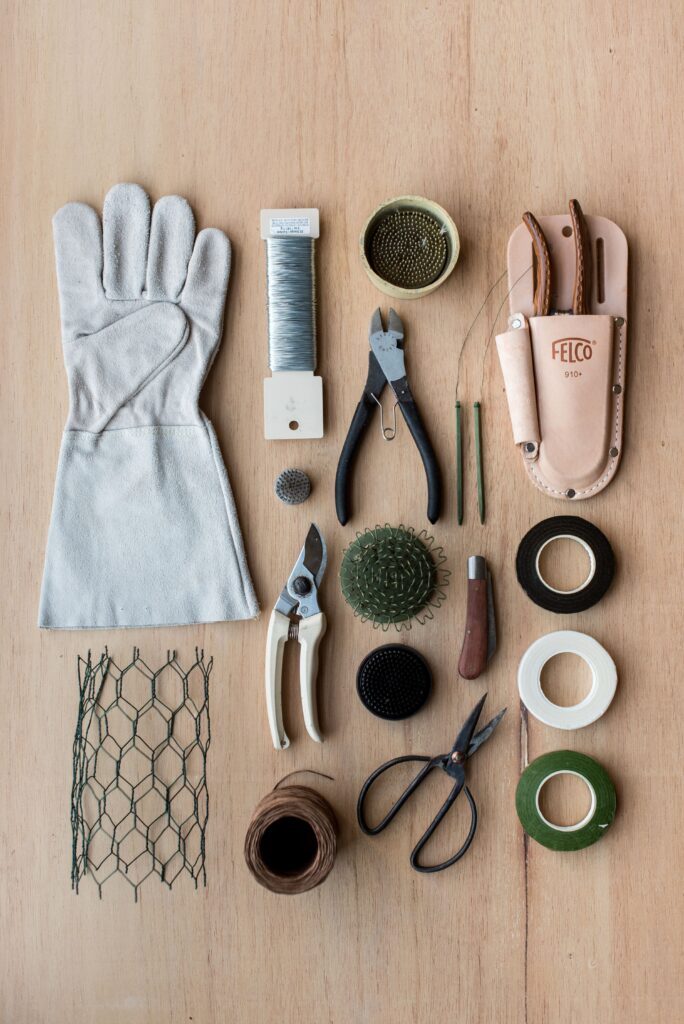
#2 – Prepare your flowers
To prepare your flowers, you’ll need to clean them too! Remove any leaves that would be submerged in water, and trim any additional roughage that would add too much bulk to your design. Keep in mind that leaves sitting in water will increase bacterial growth, so removing these leaves below the lip of your vessel will also help your floral arrangement live longer. Also, for bouquet making, ensure all leaves are cleaned off below your “binding point” or where you tie your bouquet off to create a clean handle and prevent breakage and excess weight.
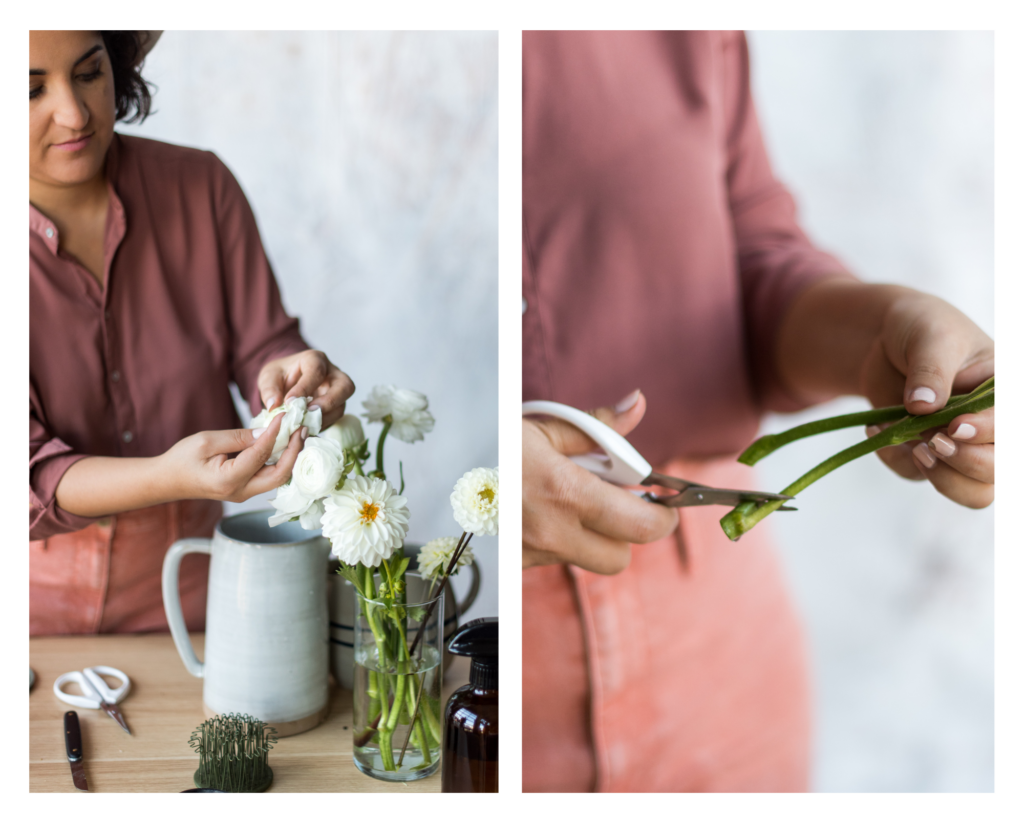
Next, when cutting your stems, use your sharpest knife or clippers. Dull clippers can crush stems, inhibiting water uptake. Once you’ve cut your stems, put your flowers in water immediately to allow maximum hydration. If you’d like to delve deeper, I have a blog post dedicated to keeping flowers fresh that can be found here.
#3 – Embrace the Principles of Design
I have often heard that we must learn the rules to break them, but I tend to disagree. The principles of design are not rules, but rather a framework to better understand how good design works. If your design looks like it is falling over, there is a balance issue, and being able to analyze that is a powerful skill and tool that serves the designer in getting the results they want.
If you need help learning how to use the principles of design, my online course, Bouquet Bootcamp®, is a great place to start!
#4 – Create a foundation for your flowers
When it’s time to start putting your arrangement together, it’s often helpful to utilize a mechanic or armature to help your flowers stay in place. I prefer chicken wire, but you can use branches as a base, a handful of greens tied with a rubber band and cut low, a grid mechanic, a flower frog (kenzan), or create a grid on top using floral tape to create a foundation for your flowers. I avoid using flower foam as much as possible. Using some type of mechanic is helpful, but learning to arrange directly into the water is an important skill and takes some time and practice.
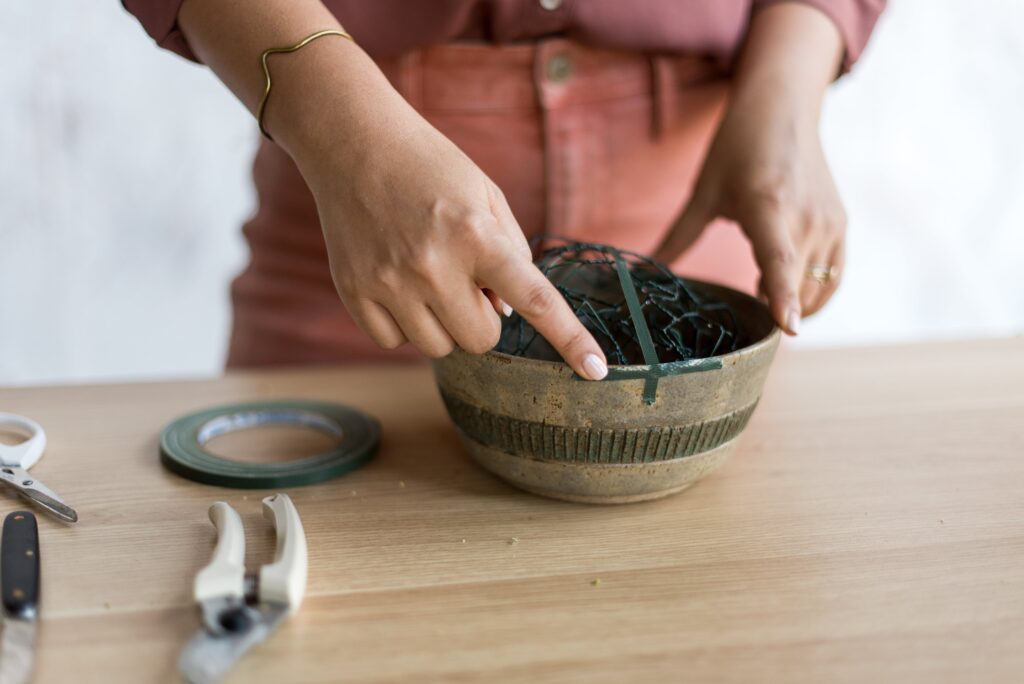
#5 – Try arranging flowers in this order: large, medium, and then small
Now that you’ve done the prep, it’s time to design!
After adding your mechanics and some foundational greens (if desired), it’s a great rule of thumb to start your floral designs by arranging the bigger, heavier flowers first. This allows you to create focal points that can frame out the arrangement. This includes large line flowers and branches, so you can establish the perimeter of your design.
Next, add your medium-sized flowers above or in front of the large blooms to create depth and a visual pathway for the eye to follow. Finally, use smaller mass (round), line and form flowers (basically anything fragile) above the medium blooms to continue to draw that visual line (implied line) through the design. Fillers can be placed low or between large and medium blooms to connect color and sizes together.
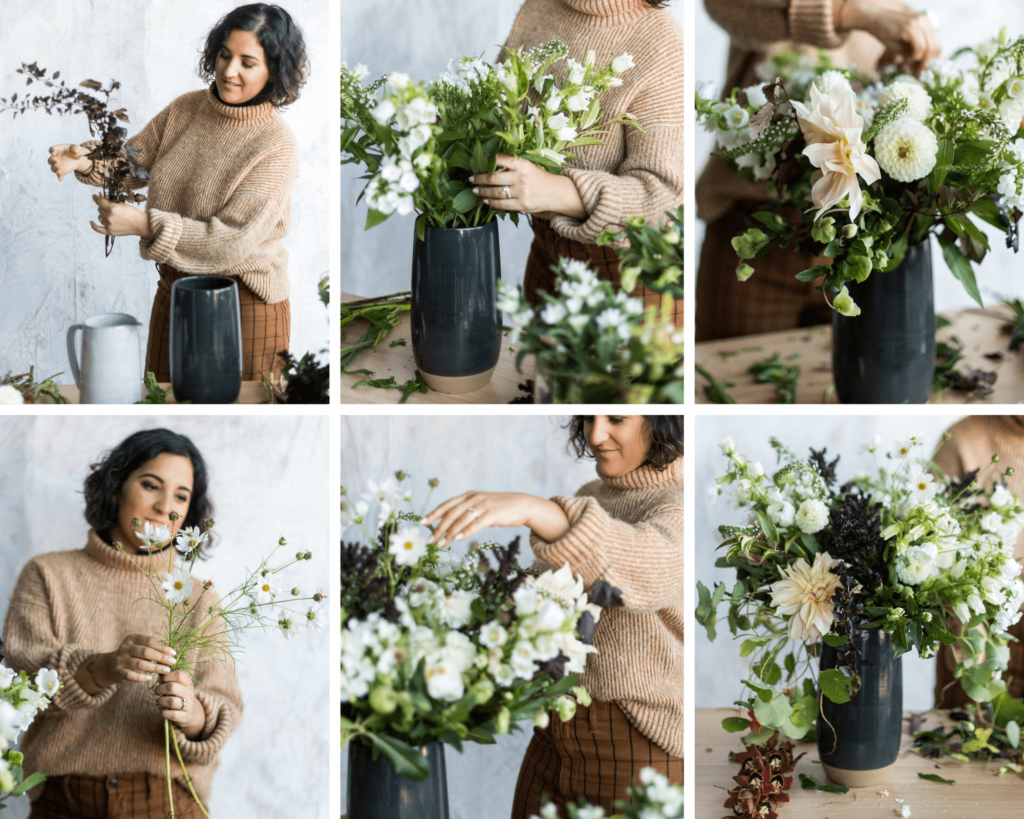
Tip: Save some longer stems with big leaves to use as fillers in the final step of designing your bouquet or arrangement. These types of greenery can be perfect for creating a cascading look that flows along the bottom of your arrangement.
#6 – Use your vase to help determine flower choice and stem length
Something that can be tricky about floral design is deciding which flowers to use and how long to cut their stems. A general rule is that your arrangement should be about one and a half times the height or width of your vase or container. This ensures the vase doesn’t take away from/feel disproportionate to your arrangement. When choosing flowers to work with, mind whether the flowers you want to use will have stems long enough for the container you plan to use.
Additionally, consider the width of the flowers you want to use. The width of your arrangement should also be proportional to the height of your flowers and vase size. The goal is to create a design that flows seamlessly and looks balanced physically and visually.
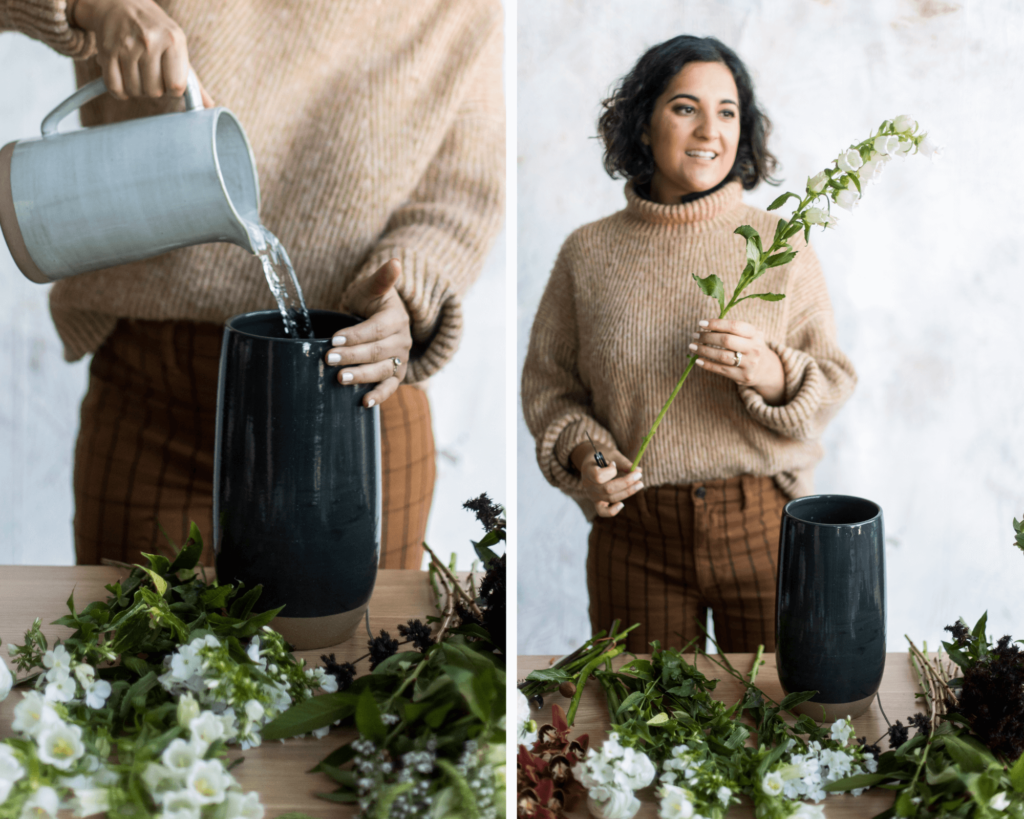
#7 – Care for your flower arrangement
One of the most important flower-arranging tips that experienced designers can overlook is not just about designing the arrangement itself, but also about caring for it afterward. To prevent bacteria growth, it’s best to give your flowers fresh water daily (or every couple of days if you’re using floral foam). Also, just like us, flowers get hangry (aka wilty and sad-looking) if they’re not fed. Good flower food isn’t just a sales gimmick; it really works!
Previous Post:
Next Post:
I think you'll also love reading...

